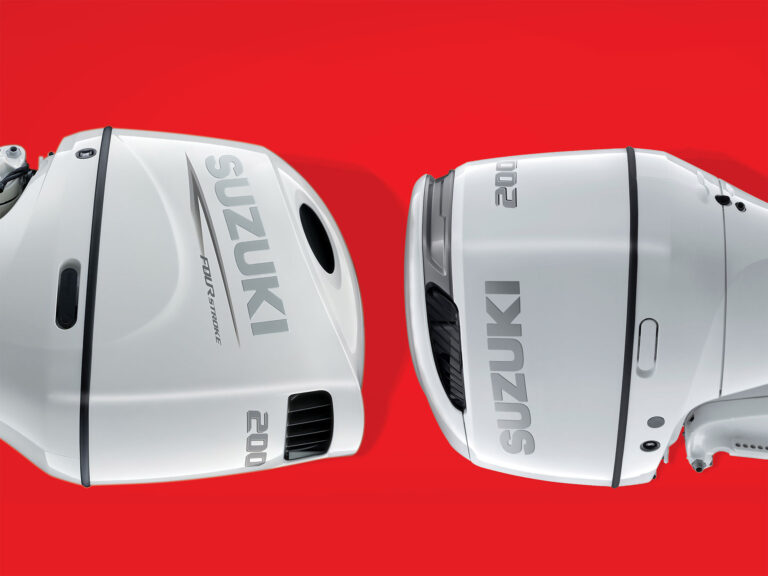A sharp knife does better work more easily and safely. You can use an oilstone, a water stone or a diamond stone. Gizmo knife sharpeners are OK but ruin the edge over time by making it thicker. Here’s how to sharpen knives.
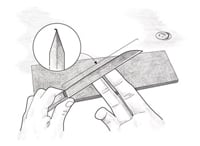
1. The Burr
Until you have a burr — a wire edge that forms on the side of the blade opposite that which you are sharpening — you are not done sharpening that side of the edge. You may be able to see a burr. Or, feel for the burr by pulling your fingertips away from the edge — across the back of the blade, not toward the point or the heel.
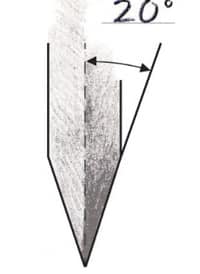
2. The Edge Bevel
Most kitchen knives have a 20-degree edge bevel. For filleting, an edge bevel of 12 to 15 degrees per side provides a clean, easy cut and reasonable resistance to dulling. If you don’t cut bone, monofilament or bait with your fillet knife, a 15-degree bevel will serve you fine.
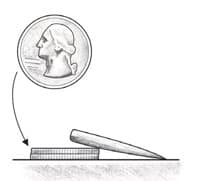
3. Set the Bevel
Divide the width of the blade at the heel by 5 to get the height above the stone needed to achieve a 12-degree bevel. If your knife is 0.75 inch wide at the heel, dividing 0.75 by 5 equals a spine height of 0.15 inches. Don’t like math? Stack two quarters, 0.07 inch each, to get the angle.
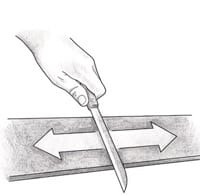
4. Push or Pull?
It doesn’t matter. Iprefer to lead with the edge. Pulling, the edge is towards you; pushing, the edge is away from you.
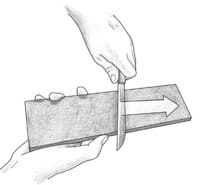
5. Sharpen It
Draw the blade across the stone, sweeping it from heel to tip as you go. Once you have a full-length burr, sharpen to create a burr on the other side. Finish with blade-first strokes, like slicing a sliver from the stone, until the burr disappears.






